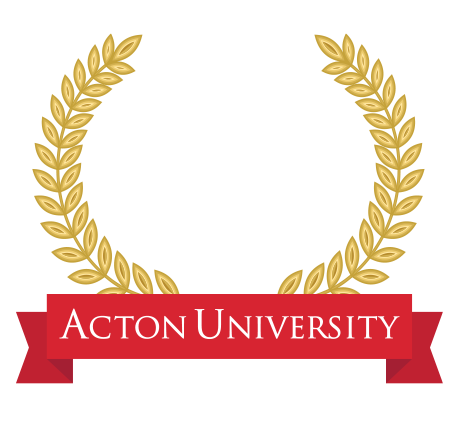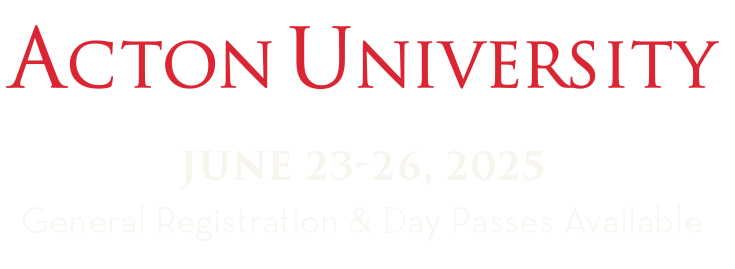The award winning book The Churching of America is a dramatic rewriting of American religious history with a free-market bent.
The authors write: “[the] most striking trend in the history of religion in America is growth – or what we call the churching of America.” Making use of a traditional church-sect distinction, Finke and Stark argue that historians have seen religion in decline in America, because their assumptions led them to look at the wrong religious institutions.
Finke and Stark charge that “frequently, a lack of religious activity is asserted when all that is lacking is the preferred brand of religious activity.” What they mean by “preferred brand” is the theologically sophisticated church institutions which are not in great tension with society. The authors compare these institutions with “upstart sects” and argue that:
[the] decline of the old mainline denominations was caused by their inability to cope with the consequences of religious freedom and the rise of a free market religious economy.
Humans want their religion to be sufficiently potent, vivid, and compelling so that it can offer them rewards of great magnitude. People seek a religion that is capable of miracles and that imparts order and sanity to the human condition. The religious organizations that maximize these aspects of religion, however, also demand the highest price in terms of what the individual must do to qualify for these rewards....
This often acerbic work challenges many time-worn notions about the vitality of religion in this country. The authors argue that the colonial period was not as “religious” as many have thought, that the growth in Catholicism in the second half of the nineteenth century was due to much more than just immigration and that notions of “urban irreligion” in American history are little more than myths. Finke and Stark trace a continuous rise in the level of religious involvement from the colonial period to the present.
For some time, the assumption in the sociology of religion has been that the societal norm is a religious monopoly; either an established church which has broad support or a hegemonic tradition like Will Herberg outlined in his work Protestant, Catholic, Jew. Finke and Stark write: “The received wisdom is that pluralism weakens faith – that where multiple religious groups compete, each discredits the other and this encourages the view that religion per se is open to question, dispute and doubt.” The Sacred Canopy by Peter Berger and Habits of the Heart by Robert Bellah and others, are examples of sociological work from this perspective which is increasingly coming under attack.
Perhaps the most interesting aspect of this book is the fact that Finke and Stark apply solidly free-market economic theory to understand the growth and decline of religious institutions. They tie what they see as the steadily increasing vitality of religions to the increasing religious diversity generated by America’s religious “free market” and the concomitant decline in “respectable” religion to the effects of religious monopoly. They write: “In keeping with supply and demand principles, to the degree that a religious economy is unregulated, pluralism will thrive.” And according to these authors, it is monopoly which is deadly to religious vitality.
While The Churching of America represents an application of a market theory for the growth and decline of religious institutions to American religious history, the theory itself is more clearly outlined in The Future of Religion which was written by Stark with William Simms Brainbridge.
The basic argument is that secularization and renewal occur simultaneously. Rather than an entire culture experiencing secularization, individual religious organizations begin as high tension religious organizations (traditionally called sects) and then grow more secular as they reduce their level of tension with society (i.e., they grow more “church-like”). In the wake of that secularization, new high tension religious organizations form to fill the vacuum. According to the argument, this happens because there is a constant demand for religion created by the fact that human beings have fundamentally religious needs.
While the Finke and Stark analysis might seem utilitarian, it should be noted that as sociologists, they have not addressed questions of the ultimate truth of religion; they have merely applied free-market economics to the earthly reality of the competition between religious institutions for members. However, like others, Martin Marty has criticized them for their “‘in your face’ approach ... which reduc[es] everything to the language of ‘regulation,’ ‘cost and benefit,’ ‘maximizing,’ ... and so on.”
Nonetheless, the impact of this work as the state of the art in the development of a new paradigm in the sociology of religion should not be underestimated. Recent events have demanded a revision of secularization theory. The growth and popularity of the New Christian Right, the renewal movement in the Catholic Church, and the growth of new religious movements, as examples, have surprised sociologists who embraced secularization theory and expected the “continuing decline” of religion.
In addition to its ability to account for recent trends which had to be explained as anomalies in traditional secularization theory, other advantages of this approach include its ability to take seriously minority religious traditions without minimizing the impact of larger trends, its ability to explain the vitality of religion in the American context as compared to the other countries with formally established churches, and the value it places on “religious commitment and participation” as well as theological refinement.
This is a provocative book which will interest anyone concerned with the status of religion in America. Furthermore, those who understand and appreciate free-market economics will find its application to the growth and decline of religious institutions extremely insightful.






